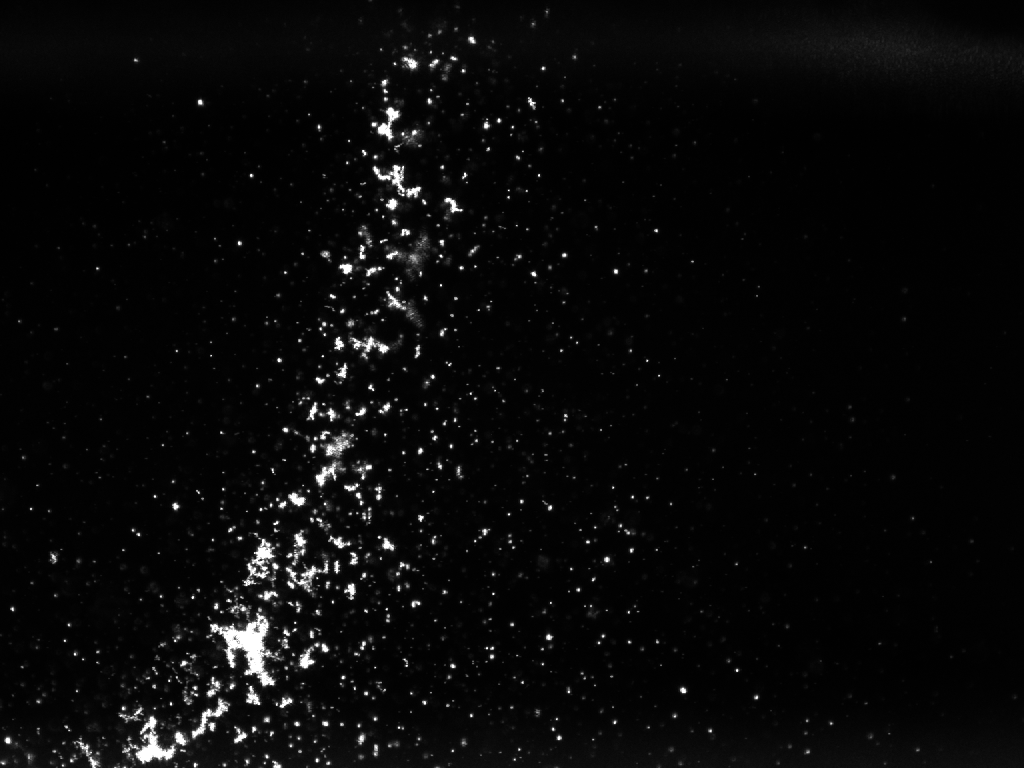ICAPS: Dust aggregate properties and growth derived from Brownian translation and rotation from the ballistic to the diffusive limit
- 1TU Braunschweig, Institut für Geophysik und extraterrestrische Physik, Braunschweig, Germany (b.schubert@tu-bs.de)
- 2Université Libre de Bruxelles, Microgravity Research Center, Brussels, Belgium
- 3University of Exeter, Department of Physics and Astronomy, Exeter, United Kingdom
The ICAPS experiment (Interactions in Cosmic and Atmospheric Particle Systems) was part of the Texus-56 sounding rocket flight in November of 2019. ICAPS studies the agglomeration of 1.5 µm-sized, monomeric silica grains under microgravity conditions, as would be present in the early stages of dust growth in protoplanetary disks, which our study aims at describing.
For this, a cloud of dust was injected into a vacuum chamber with ~7000 monomer grains per mm³. A thermal trap was then utilized to stabilize the dust cloud against any external disturbances during the flight. Two overview cameras and a long-distance microscope with a high-speed camera were used for the in-situ observations of the particles (see Figs. 1 and 2).
This talk focuses on the data analysis and results of ICAPS, in particular with respect to Brownian motion and aggregate growth. From the total experiment time of six minutes of almost perfect weightlessness, we extracted the masses and translational friction times of 414 dust aggregates from their translational Brownian motion. For a subset of 69 of these particles, we were also able to derive their moments of inertia and rotational friction times from their Brownian rotation. With these data, we derived a fractal dimension close to 1.8 for the ensemble of dust aggregates. We compared this unambiguous physical method for the determination of the fractal dimension with an optical approach, in which the mass is derived through the particle extinction and the moment of inertia is derived from the microscopic images.
The combination of both methods then facilitates the growth analysis, for which the overview cameras were also used. We observed an initial rapid, charge-induced growth of aggregates, which was followed by a slower growth rate, which was dominated by ballistic cluster-cluster agglomeration. As a surprise, around 100 seconds into the flight, clear indication for runaway growth (or the onset of gelation) was observed.
Fig. 1: Examples of dust aggregates from the long-distance
microscope images.

Fig. 2: Image from one of the overview cameras after 100 s of experiment time (1024 x 768 pixels, about 12 x 9 mm²).
How to cite: Schubert, B., Molinski, N., Blum, J., Glißmann, T., Pöppelwerth, A., von Borstel, I., Balapanov, D., Vedernikov, A., Houge, A., and Krijt, S.: ICAPS: Dust aggregate properties and growth derived from Brownian translation and rotation from the ballistic to the diffusive limit, Europlanet Science Congress 2022, Granada, Spain, 18–23 Sep 2022, EPSC2022-581, https://doi.org/10.5194/epsc2022-581, 2022.

